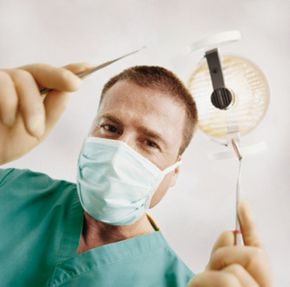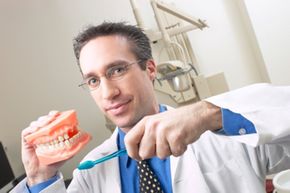The dental profession is a bright spot in the cloudy future U.S. employment picture. Students with a bent for the biological sciences, who are good with their hands and have an interest in helping others should be able to find good jobs in the dental field. First, of course, they must be willing to work hard to get accepted to dental school and to excel while they're there.
There are several reasons that the dental profession is expected to grow faster than most in the U.S. First, many baby boomer dentists are beginning to retire or work fewer hours. As a result, many of them will be unwilling to take on new patients.
Advertisement
Second, enrollment in dental schools declined in the mid-1980s. The high mark of enrollment in dental schools came in the 1980-81 school year, when there were nearly 23,000 students in American dental schools [source: ADA]. In the mid-1980s, enrollment began to drop amid fears of a glut of dentists. A few dental schools closed and the number of new dentists tapered off for a while.
As of March 2010, there are more than 19,000 students each year in pre-doctoral dental schools [source: ADA]. Yet, there is a shortage of dentists in many parts of the U.S., particularly in rural areas. Even as older dentists are retiring or seeing fewer patients, the demand for dental services is increasing. This increase in demand is due both to population growth and to an increase in the elderly population. The aging of the baby boom generation also means that there's more people living -- and keeping their teeth -- longer. That means a demand for complicated dental services. In addition, more employers offer dental insurance than in the past, so more people visit dentists regularly. What's more, new technologies allow more preventive work and cosmetic treatments like tooth whitening.
The result of these trends is a rosy picture for aspiring dentists. The U.S. Bureau of Labor Statistics projects that employment of dentists should grow by 16.8 percent through 2018 and that the demand for dental services will continue to grow into the future [source: Labor]. In addition to the prospect of setting up their own practice, new dentists may be able to take over the work of older ones.
But first, there's that matter of dental school. Read on to learn more.
Advertisement


